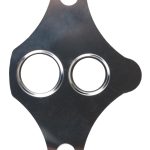Overview of Trailer Hitch Installation and Maintenance
Ensuring your trailer hitch is correctly installed is paramount for towing safety. Poor installation can lead to accidents or damage. Secure connections, proper alignment, and firmness of the hitch are crucial. Consulting the manufacturer’s guide or hiring a professional can help achieve a secure installation.
Regular trailer hitch maintenance is vital for durability and optimal performance. Check for rust, corrosion, and wear, as these can compromise the hitch’s strength. Cleaning the hitch and applying protective coatings can help prevent corrosion. Lubricating the moving parts ensures smooth operation.
Also to discover : Top Strategies to Maintain Cabin Comfort and Combat Driver Fatigue on Long Road Trips
Several common types of trailer hitches are available, each catering to different needs. Fixed ball mounts are simple and ideal for lighter loads. Adjustable ball mounts offer flexibility for varying towing heights. Receiver hitches are versatile, supporting different attachments and load types. Fifth-wheel and gooseneck hitches cater specifically to heavy-duty towing, often for large trailers or RVs.
By understanding installation requirements, engaging in regular check-ups, and selecting the appropriate hitch type, you enhance both safety and longevity. Ensuring these practices are part of your routine maximizes towing efficiency and reliability. Emphasizing correct setup and upkeep is essential as you integrate towing into your activities.
Topic to read : Essential Tips for Preparing and Sustaining Your Vehicle”s EGR System for Peak Performance
Step-by-Step Guide to Installing a Trailer Hitch
Installing a trailer hitch may seem daunting, but it can be simplified by understanding the right tools and processes. To begin, you’ll need a dedicated set of installation tools including a wrench set, torque wrench, screwdrivers, and a power drill with drill bits. These tools are fundamental to ensuring that your hitch is securely attached to your vehicle.
Start by reviewing your vehicle’s owner manual to find the designated hitch fitting points. This is crucial as improper fitting can lead to damage or unsafe towing. Once you’ve identified the fitting points, begin the installation by aligning the hitch’s mounting brackets with your vehicle’s frame. Secure the brackets with bolts, ensuring they are tightened using the torque wrench per the manufacturer’s specifications.
Next, drill any necessary holes for additional support if indicated by the hitch’s instructions. Secure the hitch to the drilled points using the appropriate bolts and washers. It’s essential to double-check all connections to confirm they are securely tightened, providing stability and safety during use.
By understanding this installation process and ensuring the correct fit for your vehicle, you can enjoy the enhanced utility and transport options that a trailer hitch offers.
Essential Maintenance Tips for Trailer Hitches
Maintaining your trailer hitch is crucial for ensuring safety and longevity. Regular checks for wear and tear are the cornerstone of hitch care. Look for corrosion, cracks, or any signs of damage, as these can compromise the hitch’s integrity. Early detection of potential issues can prevent costly repairs and accidents.
A key component of hitch care involves cleaning and lubrication. Begin by removing dirt and debris with a wire brush. Apply a high-quality lubricant to the moving parts to reduce friction and wear. This not only improves performance but also extends the life of your hitch.
Implementing preventive measures is beneficial for hitch maintenance. Keep an eye on the locking mechanism to ensure it functions smoothly. Routinely inspect the electrical connections for corrosion. By addressing these elements as part of routine maintenance tips for trailer hitches, you safeguard against unexpected failures.
Incorporating these practices into your routine helps you uphold a reliable and efficient trailer hitch. Proper care not only enhances safety but also provides peace of mind on every journey. With a focus on preventive measures, your hitch can serve you well for years to come.
Safety Checks Before Towing
Conducting proper pre-towing safety checks is crucial to ensure a smooth and secure towing experience. Begin by verifying the towing readiness of your vehicle. This involves checking that your vehicle’s weight capacity matches the load you intend to carry. Ensure that all hitch safety components are in place and secure before embarking on your journey.
An essential step is to confirm the security of your hitch. Inspect the hitch ball and coupler, ensuring they are tightly fastened and lubricated if necessary. Disconnect and reattach to test the strength, which helps to avoid potential accidents. Secure all safety chains and cross them to create a cradle effect for extra security.
Following hitch security checks, it’s critical to inspect the electrical connections and lights. Brake lights, turn signals, and indicators are vital for your safety on the road – and those sharing the road with you. Verify that all connections are working properly to ensure clear communication with other drivers.
Finally, ensure the load’s capacity aligns with your vehicle’s capabilities. Double-check that the load is evenly distributed, secured tightly, and that the weight does not exceed the vehicle’s towing limit. Properly addressing these measures ensures a stable and safe towing process.
Common Pitfalls and How to Avoid Them
When installing a trailer hitch, it’s crucial to avoid certain pitfalls that could lead to disaster. One of the most common issues is misalignment during installation. If the hitch isn’t aligned correctly, it can cause your trailer to sway dangerously, risking accidents on the road. To ensure proper alignment, follow the manufacturer’s instructions closely and, if necessary, consult with a professional.
Towing errors can often be traced back to overloading, a common but critical mistake. Exceeding your vehicle’s maximum towing capacity can put undue stress on the hitch, potentially leading to a catastrophic failure. It’s vital to know your vehicle’s towing limits and avoid overloading. Always check both the weight of your trailer and its contents before setting out.
Another frequent oversight is ignoring legal requirements and guidelines. Different regions have specific regulations regarding towing practices, and failing to comply can result in fines or more severe penalties. Familiarise yourself with the local towing laws and ensure your setup adheres to them. By addressing these issues, you can ensure a safer and more efficient towing experience.
Tools and Products for Successful Hitch Installation
Embarking on a hitch installation project requires the right set of tools to ensure efficiency and safety. First on your list should be a torque wrench, essential for securing bolts to the manufacturer’s specifications without overtightening. An electric drill and an assortment of drill bits are equally indispensable for drilling precise holes. A socket set and screwdrivers complement your gear for a seamless installation process.
In addition to these tools, investing in high-quality towing accessories can significantly enhance your towing experience. For instance, trailer ball mounts are highly recommended products that cater to various trailer types and heights. Additionally, hitch locks offer security, protecting your trailer from potential theft while parked.
When it comes to comparing hitch accessories for safety enhancement, supplemental components like sway control devices and weight distribution hitches stand out. Sway control devices stabilise your trailer, counteracting natural swaying motions. Weight distribution hitches, on the other hand, balance the load across the vehicle and the trailer, improving handling and braking.
Prioritising the right hitch installation tools, alongside the optimal towing accessories, ensures not only successful installation but also a safer and more controlled towing experience.
Compliance With Safety Standards and Regulations
Understanding trailer hitch regulations and adhering to towing laws is crucial for ensuring safety on the roads. Nationally, safety standards dictate the specifications of trailer hitches, including their size and weight capacity. These standards are established to ensure safe connectivity between vehicles and trailers, ultimately reducing accidents caused by inadequate equipment.
Locally, towing laws can vary significantly. Some regions may have specific guidelines concerning the maintenance and inspection of towing equipment, along with requirements for additional safety measures such as lighting, braking systems, and mirrors. It’s pivotal for drivers to familiarize themselves with both national and local regulations to avoid accidental violations.
The importance of complying with these safety standards cannot be understated. By adhering to these guidelines, drivers not only protect themselves but also contribute to the safety of other road users. Moreover, compliance helps prevent mechanical failures and enhances the efficiency of the towing endeavor.
Non-compliance can result in severe penalties, including fines or legal action. In some instances, insurance claims may be denied following an accident where regulations weren’t followed. Thus, being well-informed and diligent about compliance can save both money and potential legal trouble.
Troubleshooting Common Issues
Efficient hitch troubleshooting is essential when dealing with common trailer issues. One prevalent problem is alignment. Misalignment can result in unstable towing, especially during tight turns or sudden stops. To identify this, observe whether the trailer appears skewed or if it drifts off course. Fixing alignment may involve adjusting the hitch height or repositioning the trailer.
Electrical issues often plague trailers, primarily with wiring connections. You might notice malfunctioning brake lights or turn signals. Begin by inspecting the plug and socket for corrosion or dirt. A multimeter can verify the right voltage flow, ensuring components like the trailer lights receive adequate power. It’s crucial to periodically check all connections for wear or fraying and replace any damaged cables.
Unanticipated towing complications can arise from a myriad of reasons, such as varying load weights or uneven road surfaces. When faced with swaying or bouncing, redistributing the cargo might help improve stability. Consider investing in a weight distribution hitch if this problem frequently occurs. Also, check tire pressure and ensure they match the vehicle’s recommended specifications to minimise complications and enhance towing performance. Keeping these points in mind will help ensure safer and more predictable towing.











